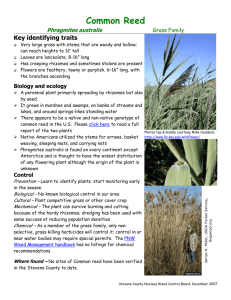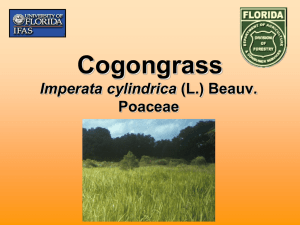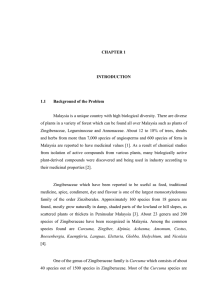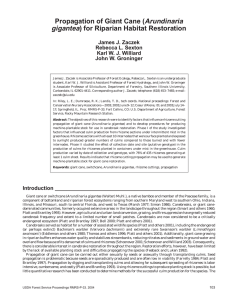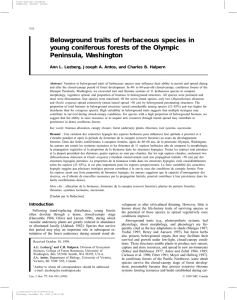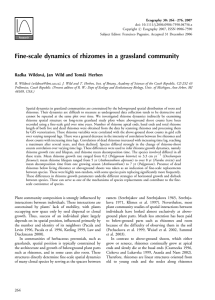Document 10829128
advertisement
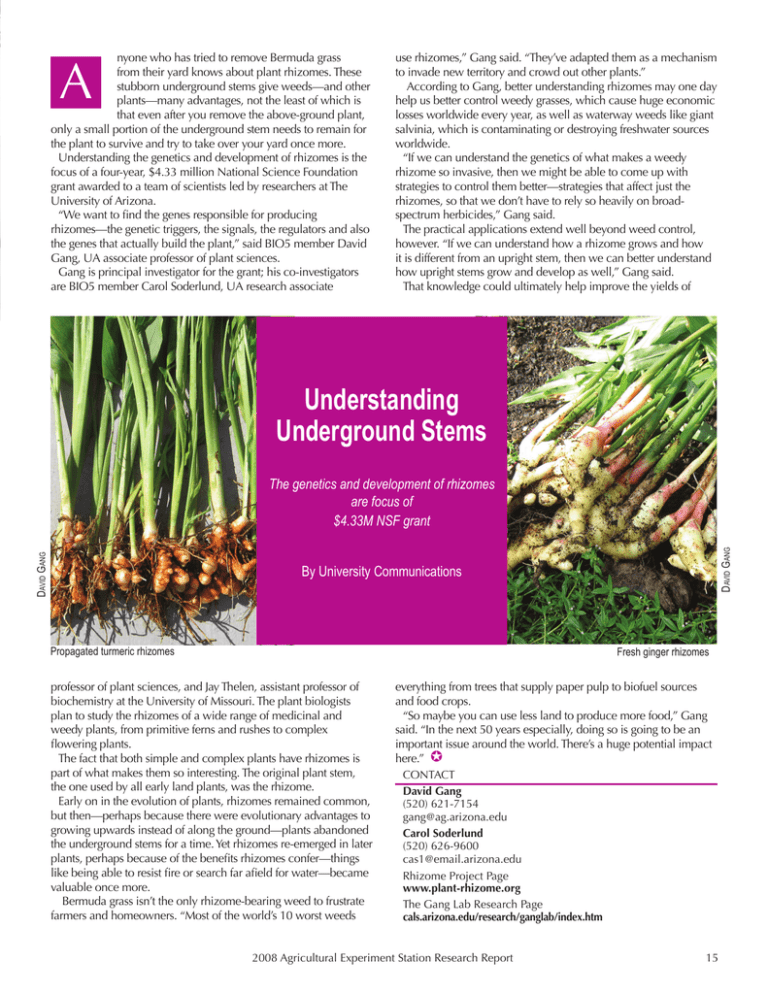
nyone who has tried to remove Bermuda grass from their yard knows about plant rhizomes. These stubborn underground stems give weeds—and other plants—many advantages, not the least of which is that even after you remove the above-ground plant, only a small portion of the underground stem needs to remain for the plant to survive and try to take over your yard once more. Understanding the genetics and development of rhizomes is the focus of a four-year, $4.33 million National Science Foundation grant awarded to a team of scientists led by researchers at The University of Arizona. “We want to find the genes responsible for producing rhizomes—the genetic triggers, the signals, the regulators and also the genes that actually build the plant,” said BIO5 member David Gang, UA associate professor of plant sciences. Gang is principal investigator for the grant; his co-investigators are BIO5 member Carol Soderlund, UA research associate A use rhizomes,” Gang said. “They’ve adapted them as a mechanism to invade new territory and crowd out other plants.” According to Gang, better understanding rhizomes may one day help us better control weedy grasses, which cause huge economic losses worldwide every year, as well as waterway weeds like giant salvinia, which is contaminating or destroying freshwater sources worldwide. “If we can understand the genetics of what makes a weedy rhizome so invasive, then we might be able to come up with strategies to control them better—strategies that affect just the rhizomes, so that we don’t have to rely so heavily on broadspectrum herbicides,” Gang said. The practical applications extend well beyond weed control, however. “If we can understand how a rhizome grows and how it is different from an upright stem, then we can better understand how upright stems grow and develop as well,” Gang said. That knowledge could ultimately help improve the yields of Understanding Underground Stems David Gang David Gang The genetics and development of rhizomes are focus of $4.33M NSF grant By University Communications Propagated turmeric rhizomes Fresh ginger rhizomes professor of plant sciences, and Jay Thelen, assistant professor of biochemistry at the University of Missouri. The plant biologists plan to study the rhizomes of a wide range of medicinal and weedy plants, from primitive ferns and rushes to complex flowering plants. The fact that both simple and complex plants have rhizomes is part of what makes them so interesting. The original plant stem, the one used by all early land plants, was the rhizome. Early on in the evolution of plants, rhizomes remained common, but then—perhaps because there were evolutionary advantages to growing upwards instead of along the ground—plants abandoned the underground stems for a time. Yet rhizomes re-emerged in later plants, perhaps because of the benefits rhizomes confer—things like being able to resist fire or search far afield for water—became valuable once more. Bermuda grass isn’t the only rhizome-bearing weed to frustrate farmers and homeowners. “Most of the world’s 10 worst weeds everything from trees that supply paper pulp to biofuel sources and food crops. “So maybe you can use less land to produce more food,” Gang said. “In the next 50 years especially, doing so is going to be an important issue around the world. There’s a huge potential impact here.” CONTACT David Gang (520) 621-7154 gang@ag.arizona.edu Carol Soderlund (520) 626-9600 cas1@email.arizona.edu Rhizome Project Page www.plant-rhizome.org The Gang Lab Research Page cals.arizona.edu/research/ganglab/index.htm 2008 Agricultural Experiment Station Research Report 15
